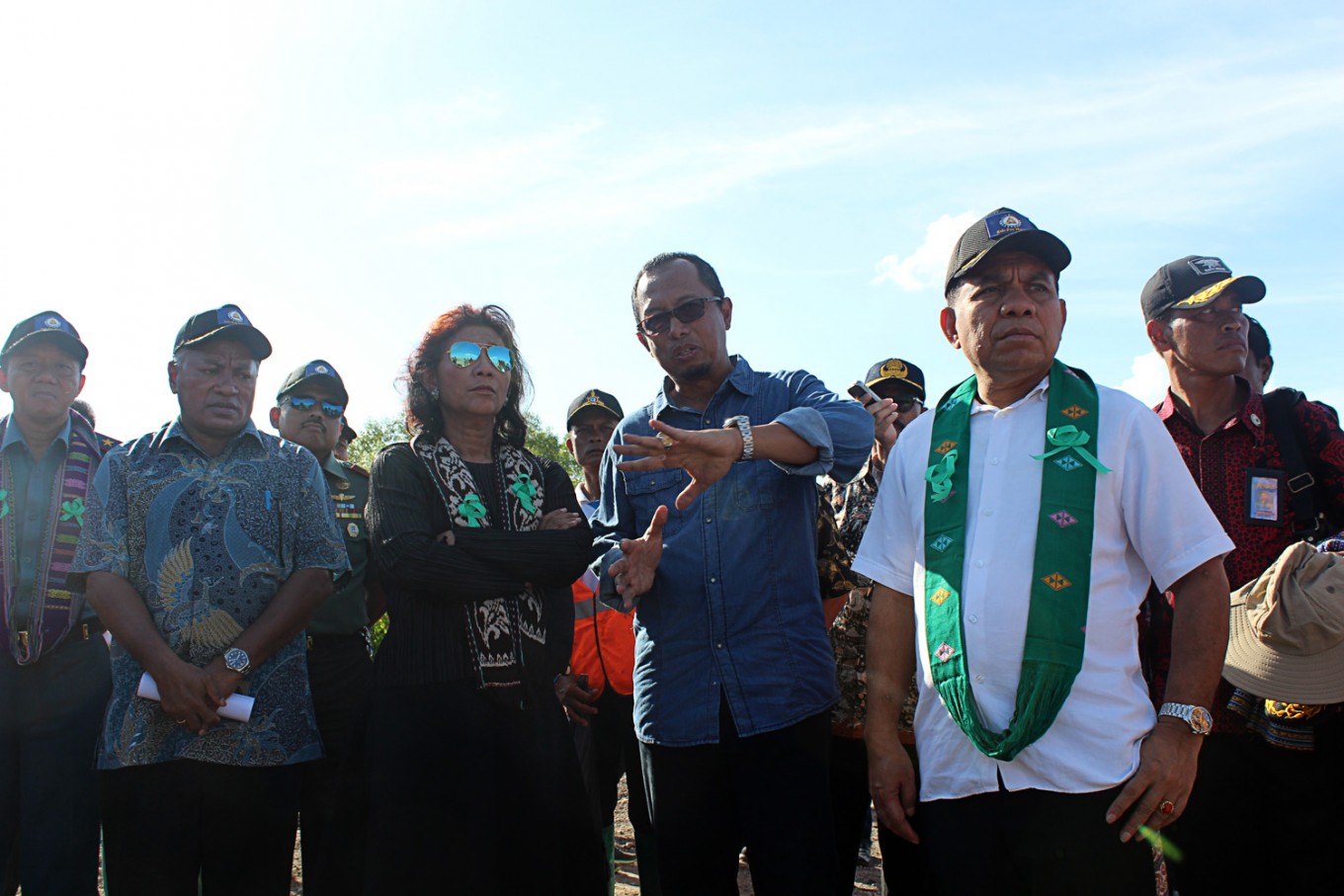Popular Reads
Top Results
Can't find what you're looking for?
View all search resultsPopular Reads
Top Results
Can't find what you're looking for?
View all search resultsNTT can help Indonesia approach salt self-sufficiency: Minister
Change text size
Gift Premium Articles
to Anyone
 Self-sufficiency – State salt producer PT Garam president director Ahmad Budiono explains Indonesia’s salt production to Maritime Affairs and Fisheries Minister Susi Pudjiastuti (center), East Nusa Tenggara Governor Frans Lebu Raya (right) and Kupang Regent Ayub Titu Eki (left) during the minister’s visit to Bipolo village, Sulamu district, Kupang regency, NTT, on Sunday. (thejakartapost.com/Djemi Amnifu)
Self-sufficiency – State salt producer PT Garam president director Ahmad Budiono explains Indonesia’s salt production to Maritime Affairs and Fisheries Minister Susi Pudjiastuti (center), East Nusa Tenggara Governor Frans Lebu Raya (right) and Kupang Regent Ayub Titu Eki (left) during the minister’s visit to Bipolo village, Sulamu district, Kupang regency, NTT, on Sunday. (thejakartapost.com/Djemi Amnifu)
E
ast Nusa Tenggara (NTT) can play a key role in helping achieve self-sufficiency in terms of salt production in Indonesia, a minister has said.
Maritime Affairs and Fisheries Minister Susi Pudjiastuti said Indonesia had the second-longest coastline in the world after Canada, stretching 99,093 kilometers, but 80 percent of the salt it consumed was still imported.
“State salt producer PT Garam is our spearhead for achieving national salt self-sufficiency. Our coastline is the second-longest in the world but 80 percent of our salt is still imported. How come?” she said at a dialog with salt farmers of Bipolo village in Sulamu district, Kupang, NTT, on Sunday.
As an Indonesian citizen, Susi said, she was sad to see things like this and hoped that PT Garam and related institutions could contact the Maritime Affairs and Fisheries Ministry about developing the salt industry in NTT.
“It is the farmers here who can help us overcome our shame," said Susi. "Hopefully [...] Kupang can produce good quality salt."
She praised PT Garam for, together with local people, having set up 400 hectares of salt ponds in Bipolo village in just two months.
“I’m happy because there has been good cooperation between PT Garam and locals, allowing the salt ponds to operate well,” said the minister.
 Precious commodity – A worker of state salt producer PT Garam flows water into salt ponds in Bipolo village, Kupang, on Sunday.(thejakartapost.com/Djemi Amnifu)
Precious commodity – A worker of state salt producer PT Garam flows water into salt ponds in Bipolo village, Kupang, on Sunday.(thejakartapost.com/Djemi Amnifu)
Separately, PT Garam financial director Beny Suharsono said the 400 ha of salt ponds, costing a total of Rp 6.2 billion ( US$464,500 ), had a production capacity of 36,000 tons per year. The ponds will soon be extended to cover up to 1,000 ha and produce up to 40,000 tons.
Beny admitted that Indonesia would still have to import salt to fulfill its annual demand 3.2 million tons. He said NTT had 9,000 ha of salt ponds spread across East Manggarai, Kupang, Nagekeo, Rote Ndao, Sabu Raijua and Sikka regencies.
“With 9,000 ha, NTT can produce around 2 million tons of salt. So actually, half of our domestic salt needs can be supplied from NTT,” he said.
Beny said around 40 percent of national salt reserves would come from NTT if all the salt ponds in the province produced optimally. Currently, around 70 percent of domestic salt supply comes from Madura, he said. (ebf)









